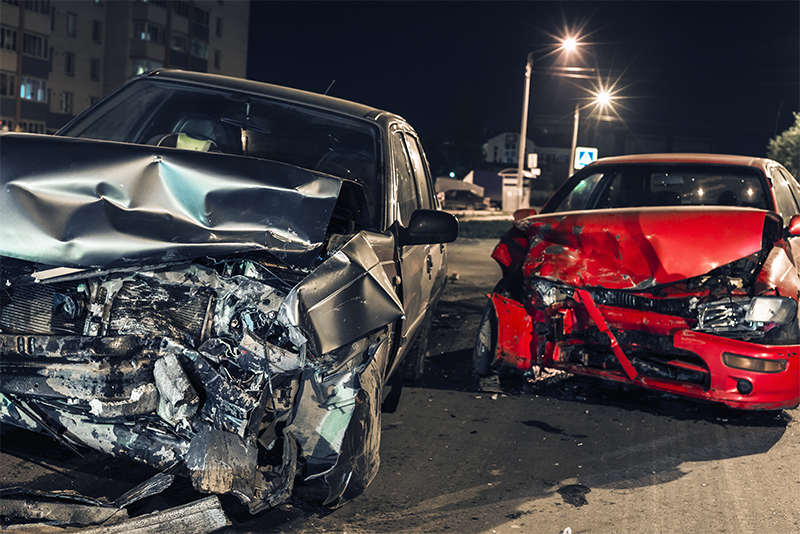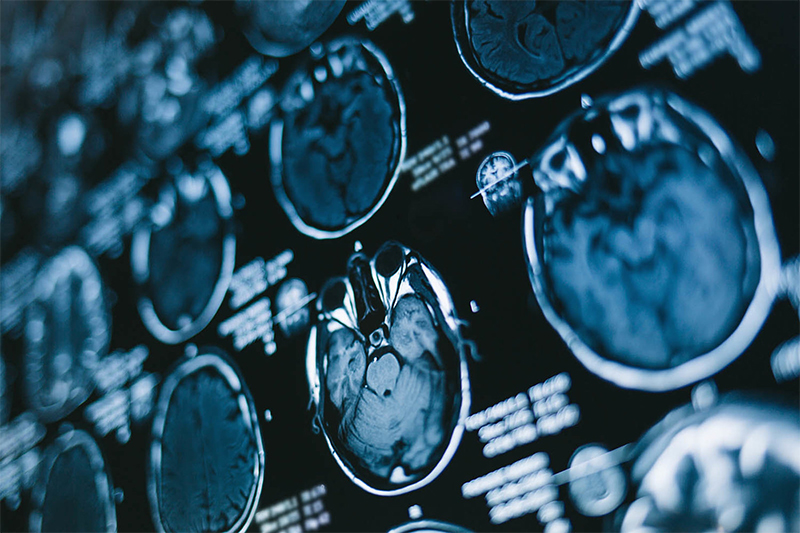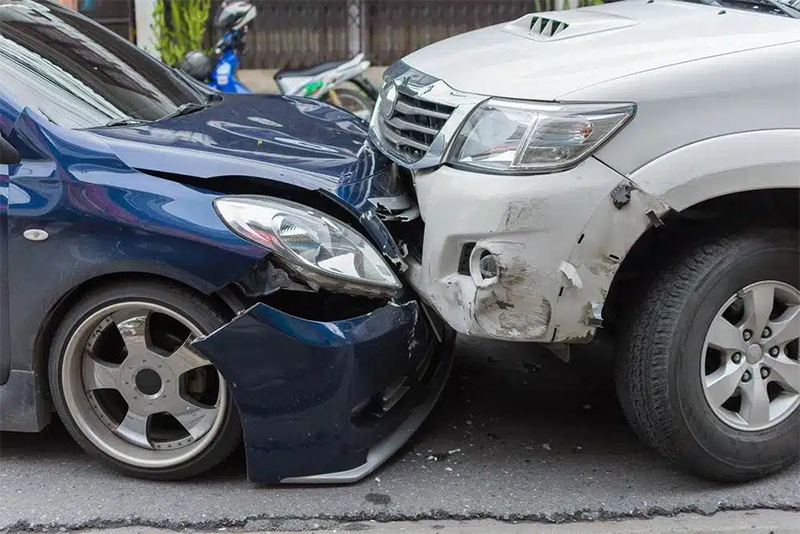Top Rated Head-on Collision Attorneys IN JUST ONE CALL
Fort Lauderdale Head-on Collision Lawyer
Find out why we are one of the best Fort Lauderdale head-on collision law firms
Fort Lauderdale Head-on Collision Attorney
Have you suffered injuries in a head-on accident? Let us work together to get compensation for your injuries. Medical bills are expensive, and the one who caused the accident should be the one to pay, or their insurance company.
Did you know that with legal representation, your head-on collision claim will be worth 3x-5x as much?
With over 30+ years of experience, the Fort Lauderdale head-on collision attorneys know what it takes to represent you effectively. You can still call the shots. Call us today at (954) 758-4553 for a free consultation.
What is a Head-on Collision?
A head-on collision is one of the most devastating types of highway accidents that can occur on Fort Lauderdale roadways. This occurs when two vehicles traveling in opposite directions collide with one another, typically resulting in severe damage and often leading to serious injuries or even fatalities.
These deadly crashes can have a profound impact on the lives of those involved and their families. They often result in life-altering injuries, including broken legs, concussions, internal bleeding, crush injuries, and traumatic brain injuries. The force of impact in a head-on collision can cause occupants of both vehicles to be thrown violently, increasing the risk of severe internal or physical injuries.
The National Highway Traffic Safety Administration (NHTSA) projects that an estimated 42,915 people died in traffic accidents in 2021, which is a 10.5% increase from the previous year. [1]

Causes of Head-on Collisions
Below are the common causes of head-on collisions in Fort Lauderdale:
-
Aggressive driving:
This is a significant contributor to approximately 66% of fatal accidents in the U.S. About half of the drivers who reported experiencing aggressive driving also acknowledged responding with aggressive and reckless driving behaviors. [2] -
Distracted driving:
One of the main causes is distracted driving, where drivers divert their attention from the road and fail to maintain their lane, leading to a head-on collision. -
Drowsy Driving:
Driving while fatigued may be equally or even more hazardous than driving under the influence of alcohol. Individuals who spend extended periods driving or drive late at night are more likely to be involved in accidents. [3] -
Excessive speed:
This is often a contributing factor in head-on collisions. Speeding reduces the ability to react to sudden changes in traffic or road conditions, leaving drivers more vulnerable to veering into oncoming traffic. According to the NHTSA, there were 9,478 road fatalities attributed to speeding in 2019, with speeding being a contributing factor in 26% of all traffic fatalities. [4] -
Poor visibility:
Driving during bad weather conditions or at night can also lead to head-on collisions if drivers do not adjust their speed or use appropriate lights.
These automobile accidents can result in serious injuries, including internal injuries, broken bones, concussions, and back and neck injuries.
The force of impact in a head-on collision is extremely high, increasing the severity of injuries experienced. One of our Fort Lauderdale personal injury attorneys can help you examine your legal options.

Table of Contents
-
Fort Lauderdale Head-on Collision Attorney
-
What is a Head-on Collision?
-
Causes of Head-on Collision
-
Types of Accident Injuries Associated with Head-on Collisions
-
What Should You Do if You Are Injured in a Head-on Collision?
-
Statute of Limitation for Head-on Collisions
-
Insurance Companies and Head-on Collisions in Fort Lauderdale
-
Get a Free Consultation From a Fort Lauderdale Head-on Accident Lawyer
Related Information
Types of Accident Injuries Associated with Head-on Collisions
The force and impact of two vehicles colliding directly with each other can cause a wide range of catastrophic injuries, both physical and psychological.
Traumatic Brain Injuries (TBIs)
Head-on collisions can result in devastating injuries, and one of the most serious consequences is traumatic brain injury (TBI). TBIs occur when the head makes a forceful impact on an object or is violently shaken, causing damage to the brain. There are several types of TBIs that can occur in head-on collisions.
One common type of TBI is a concussion, which is a mild form of brain injury. Concussions can cause temporary loss of consciousness, dizziness, confusion, and memory problems.

Chest and Abdominal Injuries
When two vehicles collide head-on, the impact can cause significant trauma to the chest area.
This can lead to a variety of chest injuries, including broken ribs, fractured sternum, collapsed lung (pneumothorax), and damage to vital organs such as the heart.
These injuries can result in severe pain, difficulty breathing, and potential complications such as infection or respiratory distress.
In addition to chest injuries, the force of a head-on collision can also cause significant damage to the abdominal area.
Internal bleeding can occur due to trauma to organs like the liver or spleen after a head-on crash. A ruptured spleen, for example, can be life-threatening if not promptly treated.
Other abdominal injuries may include lacerations to the liver or kidneys, or other internal injuries.
Spinal Cord Injuries
Head-on vehicle accidents can have devastating consequences, particularly when it comes to spinal cord injuries. The impact of these accidents can result in severe damage to the spinal cord, leading to life-altering conditions such as paraplegia and quadriplegia.
Paraplegia refers to the paralysis of the lower half of the body, including the legs and in some cases, the trunk. On the other hand, quadriplegia affects the entire body below the level of the injury, resulting in paralysis of both the arms and legs.
These injuries can have a profound physical and emotional impact on individuals, potentially the injury victim’s ability to perform daily activities, work, and enjoy a fulfilling life.

Lower Extremity Injuries
In a head-on motor vehicle crash, the lower extremities of the body are particularly vulnerable to injury. These injuries can have a significant impact on a person’s mobility and daily activities. Common lower extremity injuries that can occur in a head-on collision include fractures, sprains, and ligament tears.
Fractures are a common result of the high-impact forces involved in a head-on collision. The bones in the lower extremities, such as the femur, tibia, and fibula, can break upon impact.
Sprains occur when the ligaments, which connect the bones and provide stability, are stretched or torn. Ligament tears, such as an anterior cruciate ligament (ACL) tear, can cause severe pain and instability in the knee joint.
These injuries can significantly impact a person’s mobility and ability to perform daily activities. Fractures may require surgical intervention, immobilization, and rehabilitation to regain strength and range of motion.
Sprains and ligament tears can cause instability and restrict movement, making it difficult for individuals to walk, climb stairs, or participate in sports or recreational activities.
The long-term consequences of these injuries can be substantial. Chronic pain, disability, and reduced quality of life may result from inadequate healing or complications. Physical therapy and ongoing medical care may be necessary to manage pain and restore function.
Facial Injuries
Fractures of the facial bones, such as the nose or cheekbones, are common in head-on collisions. These fractures can result in significant pain, swelling, and bruising. Lacerations, or deep cuts, can occur, causing both physical and emotional distress.
Burns can also occur due to the deployment of airbags or contact with hot surfaces during a head-on motor vehicle collision. These burns can lead to scarring and disfigurement, further impacting a person’s self-esteem and confidence.

Psychological and Emotional Trauma
Psychological trauma from a head-on collision can manifest in various ways. Anxiety is a common symptom, with individuals experiencing excessive worrying, restlessness, and a constant sense of unease. Depression may also occur, characterized by feelings of sadness, hopelessness, and a loss of interest in previously enjoyed activities.
Post-traumatic stress disorder (PTSD) is another potential outcome, causing intrusive thoughts, nightmares, flashbacks, and avoidance of reminders of the accident. Insomnia is a prevalent issue for many accident victims, as they struggle with sleep disturbances and difficulties falling or staying asleep.
What Should You Do if You Are Injured in a Head-on Collision?
If you find yourself injured in a motor vehicle accident, it is important to take certain steps to protect your well-being and legal rights, starting at the accident scene. The first and most important action is to seek medical care immediately. Even if it involves minor or common injuries, some injuries may be less visible, and a trip to the emergency room can rule out internal injuries.
Seeking medical care promptly not only ensures that your injuries are properly diagnosed and treated but also establishes a record of your injuries, which is important when filing an accident claim. Some injuries, such as internal or traumatic brain injuries, may not be immediately apparent and can worsen over time if left untreated.

Statute of Limitation for Head-on Collisions
The Statute of Limitations is the specific time period within which accident victims must initiate legal action to seek compensation for their injuries and damages.
Generally, the Statute of Limitations in Florida for personal injury claims arising from motor vehicle accidents is two years from the date of the accident. Florida Statutes § 95.11(4)(a) However, it is essential to consult with our experienced car accident attorney to confirm the specific time limit in your case, as there are exceptions.
Insurance Companies and Head-on Collisions in Fort Lauderdale
Head-on collisions in Fort Lauderdale can result in significant injuries and damages, leaving accident victims with costly medical expenses, property damage, and emotional distress. Dealing with insurance companies for accident settlements can be complex and overwhelming. Still, with the help of our auto accident lawyers, you will be able to get maximum compensation for both economic and non-economic damages.
Florida has a ‘no-fault’ insurance system. This means that car insurance policies cover damages from minor car accidents, regardless of who is at fault. According to state law, drivers must have a policy with at least $10,000 in personal injury protection (PIP) insurance. This insurance can help with medical expenses and lost wages. [5]

Types of Insurance Coverage for Head-on Collisions in Fort Lauderdale
Head-on collisions can be devastating, resulting in severe injuries and property damage. In Fort Lauderdale, there are different types of insurance coverage available to protect individuals involved in motor vehicle accidents.
According to the Insurance Information Institute, Florida has the highest number of uninsured drivers in the country, with over 25% of Florida drivers lacking insurance. [6]
-
Personal Injury Protection (PIP) -
This coverage provides medical care and reimburses medical expenses for injuries sustained in an accident, irrespective of fault. PIP also covers lost wages and funeral expenses. -
Bodily Injury Liability -
This coverage pays for the injuries and related expenses of the other party involved in the accident if you are at fault. It helps cover medical bills, rehabilitation costs, and even punitive damages if needed. -
Property Damage Liability -
This is designed to compensate for the damage caused to someone else's property, such as their vehicle or any other object involved in the accident. -
Uninsured/Underinsured Motorist -
This protects you if the at-fault party does not have enough insurance coverage or doesn't have insurance at all. This coverage pays for your medical expenses and damages. -
Collision coverage -
This pays for the repair or replacement of your vehicle in the event of vehicle damage during a collision, regardless of fault.
Get a Free Consultation From a Fort Lauderdale Head-on Accident Lawyer
Our team of Fort Lauderdale head-on accident lawyers is dedicated to fighting for justice on your behalf. We will work tirelessly to hold the responsible party accountable for their actions and ensure that you receive fair compensation for medical costs, pocket expenses, difficult times, pain and suffering, and any other damages you have incurred.
Contact us today to receive a free consultation. Don’t wait; let us help you get the justice and financial compensation you deserve after your head-on collision in Fort Lauderdale.
Sources:
[1] Newly Released Estimates Show Traffic Fatalities Reached a 16-Year High in 2021 | NHTSA. (n.d.). NHTSA. https://www.nhtsa.gov/press-releases/early-estimate-2021-traffic-fatalities.
[2] What Causes Road Rage | Road Rage Defined | How to Deal with Road Rage. (n.d.). What Causes Road Rage | Road Rage Defined | How to Deal With Road Rage. https://www.safemotorist.com/Articles/road_rage/.
[3] Serious injuries. (n.d.). Mobility & Transport – Road Safety. https://road-safety.transport.ec.europa.eu/statistics-and-analysis/data-and-analysis/serious-injuries_en.
[4] Speeding | NHTSA. (n.d.). NHTSA. https://www.nhtsa.gov/risky-driving/speeding.
[5] Florida Insurance Requirements. (n.d.). Florida Department of Highway Safety and Motor Vehicles. https://www.flhsmv.gov/insurance/.
[6] Facts + Statistics: Uninsured motorists | III. (n.d.). Facts + Statistics: Uninsured Motorists | III. https://www.iii.org/fact-statistic/facts-statistics-uninsured-motorists.
Goldberg & Loren Personal Injury Attorneys
Fort Lauderdale Florida
(954) 758-4553

if you or a loved one have been involved in a head-on collision in Fort Lauderdale, we encourage you to reach out to our team of experienced attorneys. We will assess your situation and determine the viability of your case.
George Goldberg
Senior Partner
Have Questions About Your Case? Call Us Today: